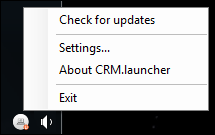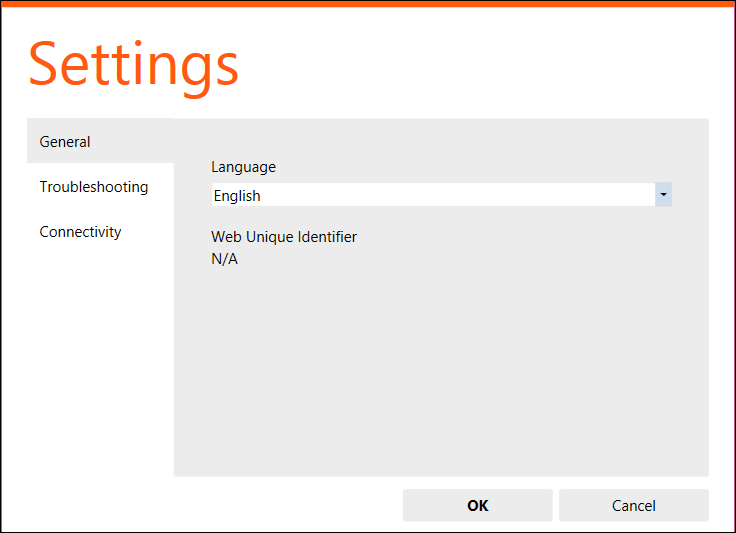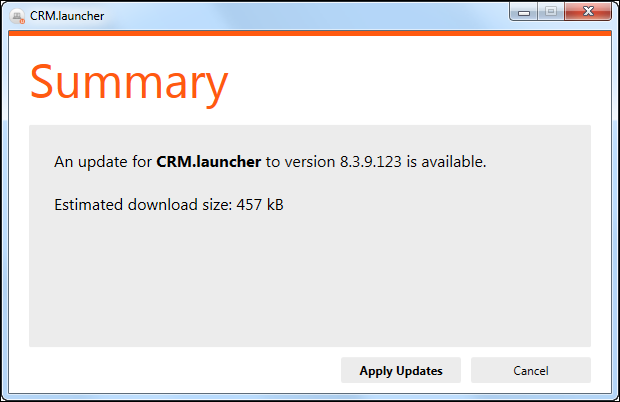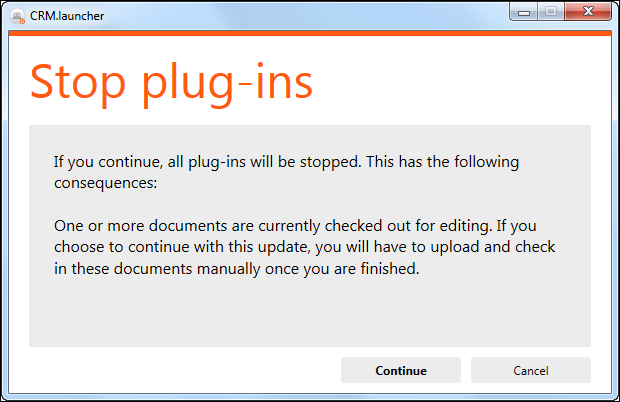Installation on the domain user (client) machine
Installing CRM.launcher on client machine.
Non-administrative domain users are offered a download link when they first access a function that requires CRM.launcher. Clicking on the link downloads the installation file from the server and automatically starts the installation. The CRM.launcher is not installed as a service on the user’s machine but only as a program that is started up automatically when the machine starts up.
On the server the setup file is located at: “<CRM launcher root>\..\data\plugins\ CRM.launcher.exe
” by default.
For information on customizing the setup, see the article “How to Customize the set up of CRM.Launcher” https://support.aurea.com.
For more information on installing CRM.launcher, see Installing CRM.launcher.
Once the setup is finished, CRM.launcher is started and the user is prompted to install a certificate that is necessary for a secure web socket communication. The prompt is displayed every time CRM.launcher is started until the certificate is installed.
For information on enabling the certificate for Mozilla Firefox, see the article “CRM.Launcher Firefox” at https://support.aurea.com.
Information on the currently used version of CRM.launcher can be found on Aurea CRM.Web's System Information page (Settings > System Information).
Configuring CRM.launcher on user machines
As long as CRM.launcher is running, an icon is displayed in the system tray. Right- or double-clicking on the icon opens the context menu.

Available options:
-
Check for updates: Checks if the version installed on the
client is up-to-date, i.e. the same as on the server, and prompts the user to install
patches if available, see Updating CRM.launcher.
You can hide this menu item by setting
If the installation of a patch is aborted by the user, the first menu entry reads Resume Patching instead: This allows the user to resume the patching process.<EnableManualUpdates>tofalsein the update.launcher.exe.config file. -
Settings: The following options are available:

- General: Allows users to select a language, see CRM.launcher Languages.
- Troubleshooting: Allows users to create a bug report, see Creating a Bug Report.
- Connectivity: Allows users to set another port used for the connection between CRM.launcher and the browser (default: 18188).
- About CRM.launcher: Displays CRM.launcher's version number.
- Exit: Exits CRM.launcher.
Updating CRM.launcher
CRM.launcher periodically checks for updates on the server and informs the user if an update is available. A short summary of the found files is displayed and the user is and asked for confirmation. The user is also informed upfront about possible connectivity losses and advised about further actions before continuing with the update (e.g. a warning stating that open documents have to be uploaded manually). Once all files are downloaded and the update has been successfully installed, CRM.launcher restarts itself and reconnects to Aurea CRM.Web.

|

|
CRM.launcher searches for new patches in the
<GlobalPatchDirectory> on the server (default path:
..\web.data\GlobalPatchDirectory). The
<GlobalPatchDirectory> is defined in the
offline.xml file located at
..\system\settings.
*.zip files are unpacked in the root installation folder,
executables are executed provided they meet the security guidelines: The
<PatchingSettings> section in the
update.launcher.exe.config file needs to be configured, and the
files have to be signed with a valid certificate.
For details, see the articles “CRM.Launcher 8.2 Feature Pack, self patching” and “How to Configure Patching Settings for CRM Launcher” at https://support.aurea.com.
Executables need to be placed in the root folder. They are executed with the location of update.launcher.exe as working directory. Executables in subfolders is not executed.
Patches must comply with the following naming conventions:
- File names must start with "launcher_".
- To enable patching of different versions on the client, you can use the words "from", "to" and "any" in the file name.
CRM.launcher patches are processed in numeric order (i.e. starting with the
lowest to_<version> number).